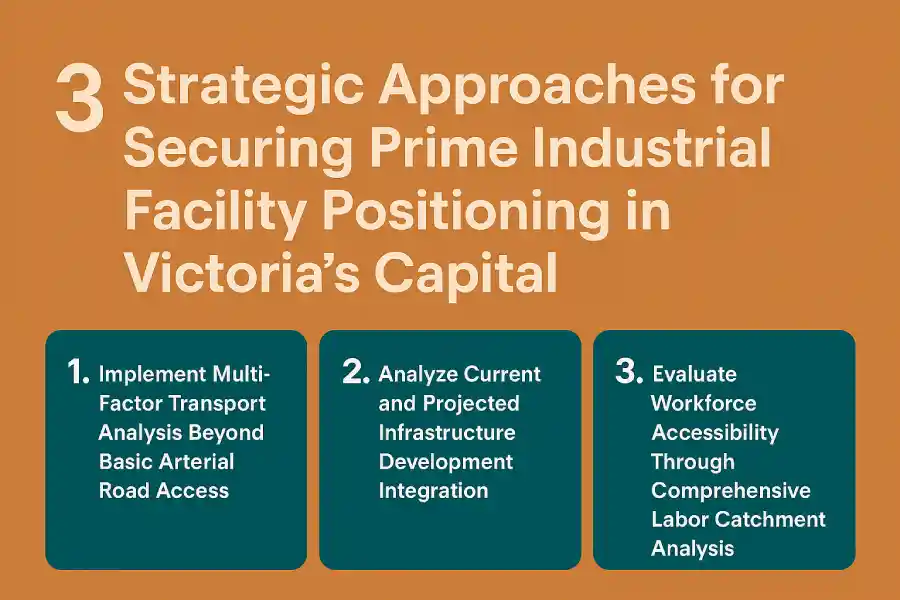
The industrial property landscape across greater Melbourne continues experiencing unprecedented transformation driven by e-commerce expansion, supply chain reconfiguration, and shifting consumer expectations regarding delivery timeframes. Recent CBRE market analysis indicates industrial vacancy rates across Melbourne’s key logistics corridors have compressed to historic lows of 1.4%, substantially below the five-year average of 3.2%, creating intensified competition for quality facilities. Organizations seeking a well-located warehouse for rent in Melbourne face increasingly complex evaluation requirements extending beyond simplistic proximity metrics to consumer populations. Technical assessment of location suitability now demands sophisticated analysis incorporating transport optimization algorithms, labor catchment demographics, and future infrastructure alignment to identify truly advantageous positions. The financial implications of suboptimal location selection extend far beyond base rental considerations, potentially generating substantial hidden costs through increased transit times, workforce recruitment challenges, and compromised customer service metrics.
Implement Multi-Factor Transport Analysis Beyond Basic Arterial Road Access
Comprehensive transport evaluation requires sophisticated analysis extending well beyond simple proximity to freeways or intermodal facilities. Organizations should implement standardized isochrone mapping utilizing actual vehicle telemetry data rather than theoretical travel distances to generate accurate service area boundaries. Technical analysis reveals dramatic variability in real-world travel times despite seemingly similar geographic positioning – with facilities along the Monash corridor demonstrating afternoon peak period travel time variations exceeding 47 minutes for identical origin-destination pairs depending on precise interchange proximity and local road network configuration. Properties positioned within 1.8km of multiple freeway entry points demonstrate measurably superior distribution metrics, particularly when these access points connect to different arterial directions. Specific analysis should examine truck-specific routing constraints, as Melbourne’s extensive truck curfew network (covering 235 designated roads) creates substantial divergence between passenger vehicle and commercial vehicle routing options. Advanced modeling should incorporate dwell time analysis at key intersections and roundabouts where larger vehicles experience disproportionate delays compared to standard traffic flow metrics. Properties positioned at strategic “crossover points” between multiple freight corridors demonstrate particularly advantageous characteristics, with locations near the Western Ring Road/Tullamarine Freeway interchange exhibiting 14-18% lower average trip times across metropolitan distribution requirements compared to seemingly equivalent locations positioned along single transport corridors.
Analyze Current and Projected Infrastructure Development Integration
Infrastructure development trajectory analysis provides critical insight into future location advantages frequently overlooked during conventional site selection. Technical evaluation should incorporate detailed assessment of Victoria’s Big Build pipeline, quantifying potential operational impacts from the 90+ major infrastructure projects currently underway. Particularly noteworthy is the West Gate Tunnel Project, which modeling indicates will reduce cross-city transit times by 17-23 minutes upon 2026 completion, substantially enhancing western corridor property values. Similar analysis should examine the North East Link’s impact on northern corridor accessibility, with KPMG economic modeling projecting 35% travel time reductions between M80 and Eastern Freeway upon project completion. Properties positioned to capitalize on these emerging corridors frequently demonstrate more favorable rental economics compared to established premium locations while potentially offering superior long-term accessibility characteristics. Analysis should extend beyond road infrastructure to examine intermodal development trajectories, particularly the Western Interstate Freight Terminal and Beveridge Interstate Freight Terminal projects, which will dramatically reshape container movement economics upon completion. Geographic information system overlay analysis combining projected infrastructure with existing facility positions frequently reveals unexpected accessibility advantages for properties previously considered secondary locations. Organizations implementing sophisticated scenario planning around infrastructure development frequently identify emerging “sweet spots” where current accessibility limitations have disproportionately depressed rental values despite strong future positioning.
Evaluate Workforce Accessibility Through Comprehensive Labor Catchment Analysis
Technical workforce accessibility assessment extends beyond simple proximity to residential areas, requiring detailed demographic analysis of surrounding population characteristics. Properties positioned within overlapping labor catchment zones from multiple socioeconomic regions demonstrate measurably superior workforce stability metrics, with turnover rates typically 3.5-5.7 percentage points lower than facilities drawing from homogeneous labor pools. Specific analysis should examine public transport integration characteristics, with properties located within 800 meters of multiple public transport modes demonstrating 23% higher application rates for warehouse positions compared to car-dependent locations. Facilities positioned near major education institutions offering logistics and supply chain programs (particularly Victoria University and RMIT) report 18-24% greater success recruiting skilled technical positions including inventory controllers and systems analysts. Melbourne’s distinctive “spoked” public transport configuration creates particular workforce accessibility advantages for facilities positioned near rail junctions like Sunshine and Dandenong, where workers from multiple corridors can access employment without cross-suburb transfers. Organizations should conduct shift-alignment analysis examining public transport scheduling compatibility with operational requirements, as service frequency variations during early morning and evening periods create substantial accessibility disparities not evident from simple proximity metrics. Properties demonstrating favorable workforce accessibility characteristics frequently command rental premiums of $8-12 per square meter yet generate positive return through reduced recruitment costs, decreased absenteeism, and enhanced workforce stability.



